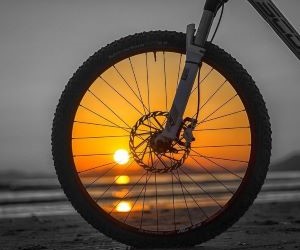Learn how to deal with punctures on long rides with prevention tips, repair techniques, and smart gear choices to keep rolling without stress.
WHAT NEW SAFETY RULES OR REGULATIONS IS THE UCI CONSIDERING FOR ROAD RACING?
Road racing is constantly evolving, and safety has become a top priority for the Union Cycliste Internationale (UCI). After years of high-profile crashes and debates around equipment and race organization, the governing body is introducing and considering new regulations. These include restrictions on rider positioning, updates on helmet standards, course safety audits, and even technology-assisted monitoring. This article provides a deep dive into the upcoming safety rules, their motivations, and their potential impact on riders, teams, and the spectacle of road racing.

Equipment and rider protection
The UCI’s most visible interventions focus on rider equipment. Safety begins with what cyclists wear and ride, and ongoing reforms aim to reduce risks associated with crashes and extreme weather. In recent years, high-speed incidents have prompted updates in helmet design, clothing regulations, and even bicycle frame specifications.
Helmet standards and innovations
Helmets are undergoing stricter certification processes. The UCI is aligning with international safety standards while pushing for improved testing against rotational impacts, a key cause of concussions. Manufacturers are now experimenting with MIPS-like technologies, better ventilation for heat management, and crash sensors that can alert medical teams in real time.
Protective clothing and barriers
The UCI is also exploring requirements for abrasion-resistant clothing, particularly in time trials where speeds are highest. Barriers used in sprint finishes are being standardized, with stricter rules for their placement, height, and materials to minimize the chance of catastrophic pileups. The infamous crashes in recent sprints have been central to this debate.
Stricter helmet testing against rotational forces.
Crash sensors integrated into helmets.
Abrasion-resistant kits for time trials.
Safer, standardized sprint barriers.
Positioning on the bike
Another controversial area is rider positioning. The UCI has already banned the “super tuck” descending position and forearm resting during time trials outside of official TT bikes. Future rules may further refine acceptable aerodynamic positions, with safety prioritized over marginal gains. These measures aim to prevent crashes caused by unstable or extreme riding postures.
Race organization and course safety
Beyond equipment, the UCI is intensifying oversight of how races are organized. Course design, crowd management, and emergency protocols have all come under scrutiny. Organizers must meet higher standards if they want to remain on the WorldTour calendar, and new audits will enforce accountability.
Course risk assessments
All WorldTour and ProSeries events are now subject to pre-race safety inspections. Independent auditors review road furniture, technical descents, and sprint finishes. Organizers may be required to modify routes, add barriers, or adjust stage layouts to eliminate known hazards. These audits represent a shift from reactive to preventive safety management.
Crowd and vehicle management
Fans are essential to cycling’s charm but can create risks when poorly managed. The UCI is considering stricter rules on roadside barriers in high-speed sections and closer coordination with local police. Race vehicles—team cars, motos, and neutral service—are also being reviewed, with GPS monitoring and limits on vehicle numbers under discussion.
Mandatory pre-race safety audits.
Standardized sprint and descent protocols.
Tighter vehicle management with GPS tracking.
Improved fan control in critical sections.
Weather-related protocols
Extreme weather is another focal point. The UCI Extreme Weather Protocol is being strengthened, with clearer thresholds for shortening or neutralizing stages due to heat, snow, or storms. Organizers must provide contingency plans, and rider unions are pushing for stronger decision-making powers when conditions become unsafe.
Technology, data, and future outlook
Technology is increasingly seen as a tool for safety. Real-time data collection, wearable devices, and advanced communication systems may soon become mandatory parts of pro cycling. These innovations promise faster medical responses and better oversight of high-risk race moments.
Real-time rider monitoring
The UCI is exploring rider monitoring systems that transmit biometric data during races. Heart rate, oxygen levels, and crash detection sensors could alert race doctors instantly. This level of live medical surveillance mirrors developments in Formula 1 and could revolutionize response times to accidents.
Communication and race control
Improved communication channels are also on the horizon. Race radios may be expanded to include direct medical alerts, while GPS tracking of every rider will allow organizers to pinpoint crashes instantly. Drone-assisted race control has been discussed as a way to monitor hard-to-access sections of mountainous routes.
Live biometric monitoring for medical response.
Expanded use of race radios for safety alerts.
Drone technology supporting course oversight.
GPS tracking integrated into safety management.
Future outlook for UCI safety rules
The UCI’s safety agenda reflects cycling’s transition into a more regulated, technologically advanced sport. While critics argue that constant rules risk diluting tradition, the broader consensus is clear: reducing catastrophic crashes is essential for the future of road racing. Expect continued evolution, with greater reliance on data-driven oversight, international collaboration, and pressure from rider unions. Safety is no longer a side discussion—it is the cornerstone of professional cycling’s future.
YOU MAY ALSO BE INTERESTED






